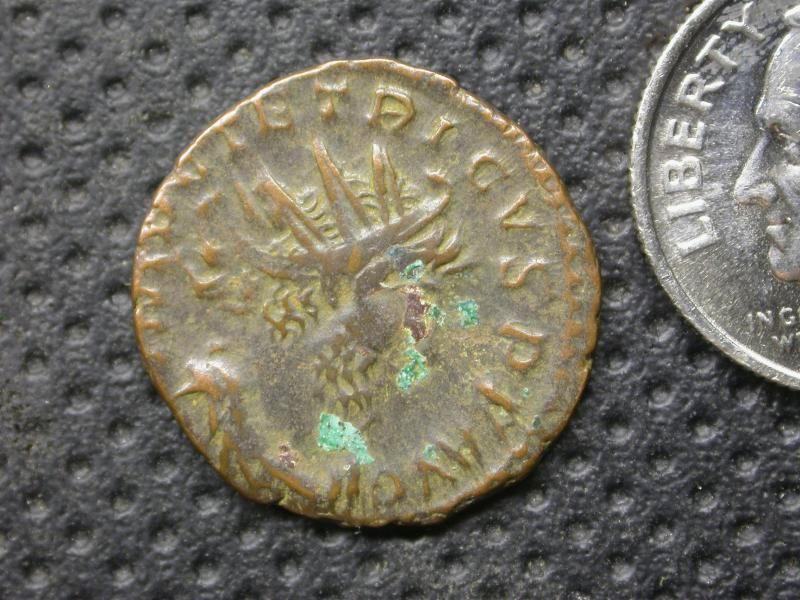overwhelmed with the ancients...
 CoinCoins
Posts: 698 ✭✭✭
CoinCoins
Posts: 698 ✭✭✭
i bought 90 ancients the other day as part of a much larger collection, but i don't even know where to start with them. they're decent. details. all copper, all about the size of a dime. i'd like to know more about them. instead of posting 180 pictures here, can someone help me out with how to start attributing them? here's one i picked at random....... i have no clue what it is. i don't get it.


i know wildwinds.com is a great resource, but that's a few steps ahead of where i'm at.


i know wildwinds.com is a great resource, but that's a few steps ahead of where i'm at.
0
Comments
Bronze antoninianus
IMP C TETRICVS P F AVG, radiate, draped and cuirassed bust right;
reverse COMES AVG, Victory standing left, extending wreath in right, palm frond in left;
RIC V 56, SRCV III 11232
Another good place to go to help identify the typical kinds of Late Roman Bronzes that make up the bulk of cheap, readily available ancients is romancoin.info, hosted by coin dealer FORVM.
But some general rules might be in order.
If the obverse of the coin shows the emperor wearing a "radiate crown", the spiky headgear you can see the emperor is wearing on the coin pictured above, then the coin dates from before AD 300, when this kind of coin became obsolete. Most coins dating after AD 300 show the emperor either bare-headed or wearing a ribbon-like diadem instead.
If there are no letters beneath the "exergue", the line running across the bottom of the reverse that the reverse figure is standing on, then the coin dates from before AD 300 as well. If there are letters or symbols there, then it might be a mintmark. Working out the mint is important for attributing post-300 coins properly, because the standard catalogues that cover this series sort the coins by mint, rather than by emperor or chronologically. A list of mintmarks appears near the bottom of the romancoin.info site.
Roman emperor Marcus Aurelius, "Meditations"
Apparently I have been awarded the DPOTD twice.